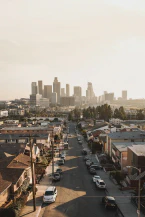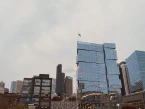Discovering Worlds Most Unique Bridge Marvels

10 Incredible Bridges that Redefine Travel
1. Moonlight Rainbow Fountain Bridge, Seoul
Crossing the Han River between the Siaocho and Yongsan districts, this double-decker marvel redefines bridge design. Built atop the existing Jamsu Bridge – which uniquely gets submerged during heavy rainfalls – this structure boasts the longest bridge fountain worldwide. The Moonlight Rainbow Fountain showcases an awe-inspiring nighttime light spectacle, making it one of Seoul’s must-visit landmarks.
2. Helix Bridge, Singapore
Drawing inspiration from the double helix structure of DNA, the Helix Bridge in Marina Bay is a stainless steel masterpiece. At a stretch of about a thousand feet, pedestrians can enjoy periodic viewing platforms that offer a panoramic view of Singapore’s stunning skyline. By night, this bridge transforms into a luminescent wonder with its myriad of LED lights.
3. Wind and Rain Bridge, Sanjiang County
Not only is this bridge over a century old, but it’s also a testament to human ingenuity. With three floors, five pavilions, and countless viewing porches, this structure was constructed without a single nail. Using the dovetailing technique, the builders ensured this bridge stood tall and firm. Now, it’s a sought-after tourist hotspot.
4. Sundial Bridge, Redding, California
Who said a bridge is just a bridge? In Redding, California, this pedestrian bridge is not only a means to cross the Sacramento River but also doubles as a sundial. Its striking 217-foot-tall tower is the centerpiece, casting shadows with impeccable precision. Don’t forget to look down while walking; the glass deck offers a mesmerizing view of the river beneath.
5. Gateshead Millennium Bridge
Also known as the Blinking Eye Bridge, this award-winning structure is a blend of design and function. Equipped with hydraulic rams, it swings upwards, allowing vessels to pass. While its innovative design has garnered global recognition, it’s the bridge’s utility for pedestrians and cyclists that makes it truly special.
6. Falkirk Wheel, Scotland
Imagine a bridge that doesn’t just connect two points, but also elevates boats 79 feet in the air! As the world’s sole rotating boat lift, the Falkirk Wheel is a stunning combination of design, engineering, and vision, connecting two of Central Scotland’s primary canals.
7. Henderson Waves, Singapore
Singapore strikes again with another architectural marvel. The Henderson Waves, with its distinctive twisting design, not only offers shelter but also provides seating areas for visitors to enjoy the view. When darkness falls, its LED lamps bathe the bridge in a surreal glow, making it a nighttime attraction.
8. Øresund Bridge, Sweden and Denmark
Uniting Scandinavia, the Øresund Bridge is part bridge, part tunnel, and part artificial island. Its sci-fi appearance might make one believe it’s from another world, especially when one end seemingly submerges into the strait. This $3 billion project showcases the collaborative spirit of Sweden and Denmark.
9. Dragon Bridge, Vietnam
Da Nang’s Dragon Bridge is a spectacular sight, especially during weekends when its dragon head breathes fire! Accompanied by a captivating water and light show, this bridge symbolizes power and luck in Vietnamese culture, offering travelers both a visual and cultural treat.
10. The Rolling Bridge, England
Situated in London’s Paddington Basin, the Rolling Bridge might be modest in size but is mighty in design. Its innovative hydraulic system allows it to curl, resembling a scorpion’s tail, making way for boats in the canal below. A true testament to human imagination and engineering prowess.
Travel bridges the gap between places and cultures. But as we see, sometimes the bridge itself becomes the destination, blending functionality, art, and storytelling into one. Which of these would you cross first?
Conclusion
Bridges, in their most fundamental form, are connectors, filling voids and stitching landscapes together. However, as our exploration into these extraordinary structures has shown, bridges can be so much more than mere pathways. These architectural marvels are embodiments of human ingenuity, merging art with engineering, and often capturing the essence of the cultures and communities they serve. From the awe-inspiring illumination of Singapore’s Helix Bridge to the old-world charm of Sanjiang County’s Wind and Rain Bridge, each offers a unique narrative, intertwining functionality with beauty, and tradition with innovation.
In an ever-evolving world, where urban sprawl often threatens to diminish the allure of natural landscapes, these bridges serve as gentle reminders of our capacity to enhance, rather than detract from, the beauty that surrounds us. They stand testament to our aspirations, our challenges, and our triumphs. Whether you’re an architecture aficionado, a travel enthusiast, or someone simply seeking inspiration, these bridges beckon you to not just cross over, but to pause, reflect, and immerse in their stories.
In essence, the journey across a bridge can be as transformative as the destinations they connect. It’s an ode to human ambition, a tangible proof that when we blend creativity with purpose, the outcomes are nothing short of spectacular. Next time you find yourself on one of these or any other bridge, remember: it’s not just about getting from one place to another; it’s about the experience, the history, and the vision that bridges represent. Safe travels!
1. Why are unique bridge designs significant in modern architecture?
Unique bridge designs play an integral role in modern architecture as they embody the perfect blend of form and function. These structures not only cater to logistical needs but also reflect the creative prowess, technological advancements, and cultural narratives of the societies that build them, making each bridge a symbol of progress and identity.
2. Are these bridges safe despite their unconventional designs?
Absolutely. While these bridges often showcase unconventional and daring designs, they undergo rigorous engineering and safety evaluations. Their uniqueness does not compromise on safety; in fact, their innovative designs often incorporate the latest in structural engineering, ensuring stability and longevity.
3. How do these bridges impact local tourism?
Bridges, especially those with distinctive designs, often become iconic landmarks, drawing tourists from around the globe. They serve as both functional infrastructures and attractions, improving local tourism by offering unique perspectives, photo opportunities, and often, a deep dive into local history and culture.
4. Can these bridges withstand environmental challenges like earthquakes or strong winds?
Modern bridge construction prioritizes toughness against environmental challenges. Engineers employ advanced technologies and materials, combined with thorough research on local environmental conditions, to ensure that these architectural wonders can withstand earthquakes, strong winds, and other potential threats.
5. How do local communities perceive these modern bridge designs compared to traditional ones?
While the reception varies across communities, many see these modern bridges as symbols of growth, innovation, and global connectivity. Traditional bridges, on the other hand, are often revered for their historical and cultural significance. Both types coexist, offering a rich tapestry of the old and new, representing the journey of human civilization through time.
















